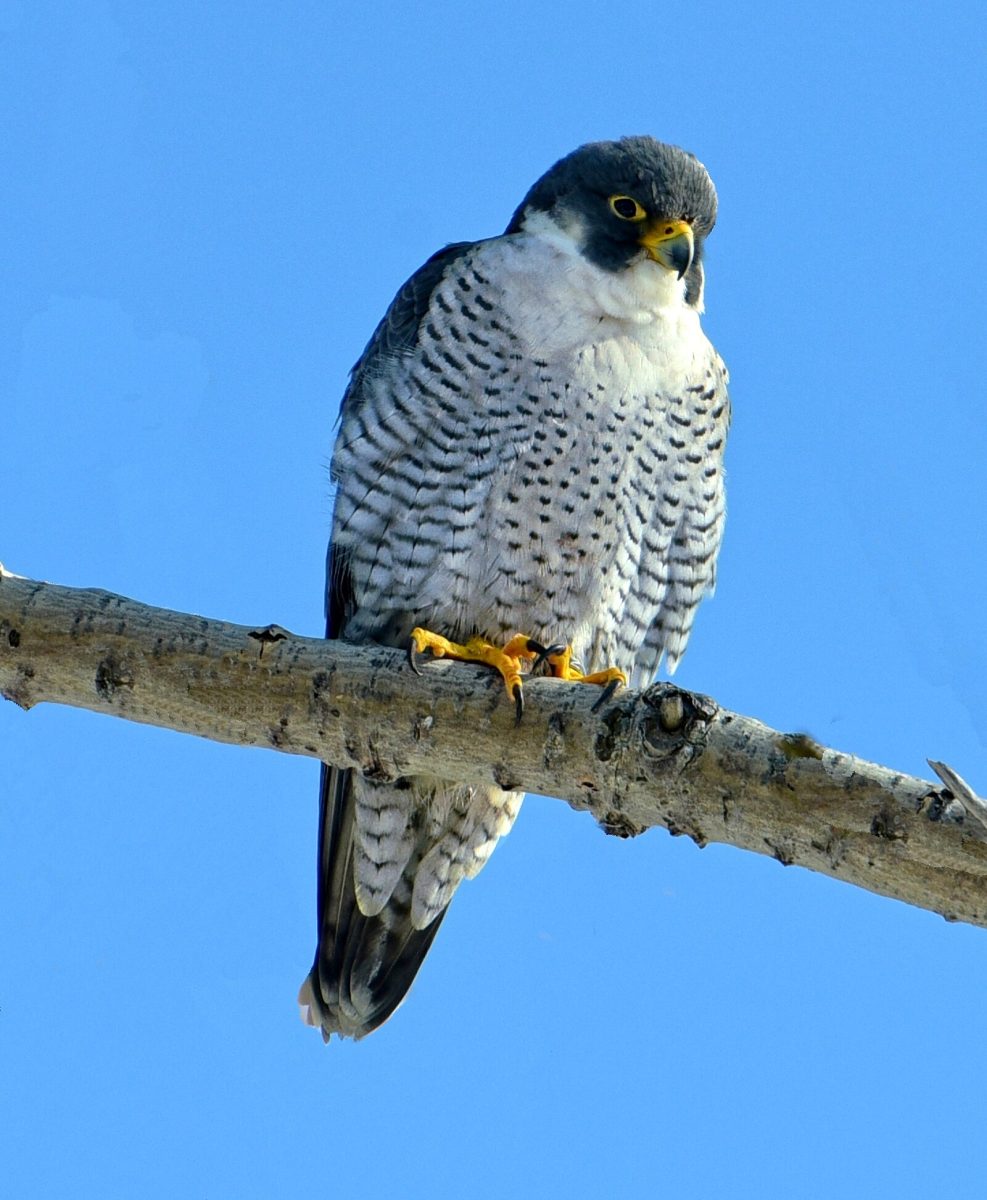Pitt’s resident falcons are finally spreading their wings.
“Someday one of them is just going to … let go and fly away from the ledge,” Kate St. John, author of the “Outside My Window” bird-watching blog and volunteer tracker of the falcons, said.
The peregrine falcon chicks, now called fledges, that recently hatched on the Cathedral of Learning have taken their first flights as of June 3. The fledges, who hatched on April 22, had been preparing for their first flights over the past few days by hopping along the ledges of the Cathedral.
St. John confirmed that one chick had flown and that the other had most likely flown.
“When I saw a peregrine on a favorite perch at 40th floor northwest, I assumed it was an adult because the location … is too challenging for an amateur to land on,” St. John said via her blog. “Through my scope, I confirmed it was a juvenile, probably the male nicknamed Yellow who fledged a day or two ago.”
As for the second fledge, nicknamed Blue, St. John is confident that she also flew.
“I found an adult intently watching the 38 east ‘patio’ roof, so it’s a good bet that the youngster was over there,” St. John said in a blog post. “My hunch was supported by two ‘kakking’ episodes in which an adult circled the building and shouted at a potential threat at that level. The adults are highly aggressive at this stage.”
According to St. John, the fledges’ parents will continue to feed them for about a week after the first flight and will then teach them how to hunt for themselves.
“The nest is just the baby’s crib, so they’re not going to stay there,” St. John said.
Once they have more flying coordination, the fledges will display impressive technique when learning to hunt from their parents, according to St. John.
“They try to flip upside down … and if [the prey] drops, they chase it towards the ground and try to catch it in the air,” St. John said.
The parents, Carla and Ecco, are new to the Cathedral nest box this year, according to KDKA. Carla, the fourth breeding female in Pittsburgh, was originally banded in Indiana while Ecco is unbanded with unknown origins, St. John said.
Patti Barber, endangered bird biologist from the Pennsylvania Game Commission, banded the chicks themselves on May 21. These lightweight tags placed on the birds’ legs will help scientists track the birds throughout their lives, according to KDKA. Barber said that each bird gets two distinct bands.
“[The] silver band is the Fish and Wildlife Service band. It comes from the bird banding lab, and each has a unique number,” Barber said. “From a distance, you need something that’s a little more obvious. So we also put what we call a color band on it. It lets us know which bird we’re looking at.”
According to Barber, the PGC marked the color bands with blue and yellow electrical tape. Barber said that banding peregrine falcons is a vital part of their conservation.
“We rely on volunteers to help us with observations of what the peregrines are doing,” Barber said. “And so by having those birds banded, it helps the volunteers know who they’re looking at.”
Peregrines were once all but extinct in Pennsylvania, according to Barber, but conservation efforts have revived their numbers, including in Pittsburgh.
“When peregrines were listed as an endangered species by the federal government, we had basically lost all of the breeding birds east of the Mississippi. But with changes we made, banning DDT, passing the Clean Water, Clean Air Act and the Endangered Species Act, we set the stage for their recovery,” Barber said. “At this point, there are over 50 nests in the state.”
Curious bird watchers can view the Cathedral falcons on the National Aviary’s FalconCam live stream. The University IT department spearheaded the program by placing the camera near the nest box.


